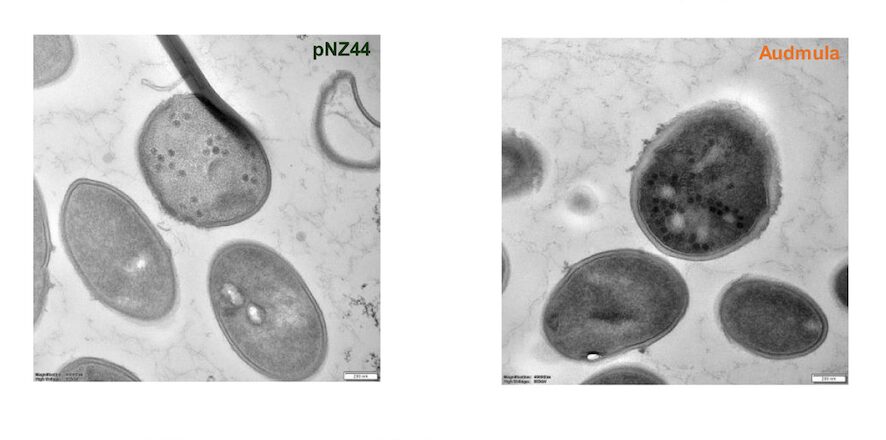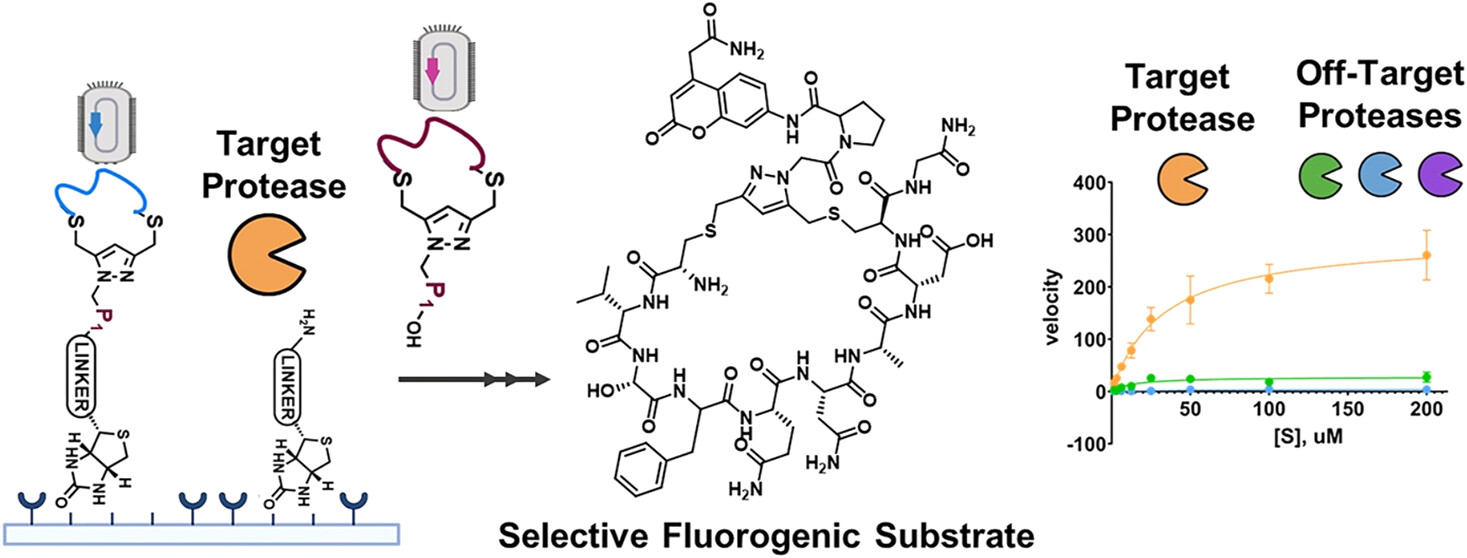 |
| Bacteria and bacteriophage. Photo by Oxford (Article by Pete Wilton) |
In recent years, the development of bioluminescence-based reporter bacteriophages has revolutionized the monitoring of microbes and their diseases. These reporter bacteriophages are genetically engineered to carry a gene that will be integrated into the host genome which will at one point reflect the fluorescence signals. Bioluminescence reporter bacteriophages have high specificity and sensitivity, making them useful tools for studying microbes and their diseases. They are also useful research tools that enable researchers to monitor the efficacy of bacteriophage/drug treatments, the spread of infection, the success of phage delivery, and the activity of phage-resistant bacteria. In this article, we provide an overview of bioluminescence reporter bacteriophages, describe their applications and advantages, and discuss how you can use them in your own research.
What is Bioluminescence?
Bioluminescence Reporter Bacteriophages: The Basics
Uses of Reporter bacteriophages
- Bacterial pathogens in clinical samples can be detected quickly and reliably.
- Assessing contaminations in samples (e.g water and food samples)
- Monitoring spread of infection or contamination
Advantage of using reporter bacteriophages
- They are specific
- They are reliable
- They are fast (act quickly)
- Has potential for automation
- Easy to make them reproducible and user friendly
How to use Reporter Bacteriophages in your research
Before discussing the applications of bioluminescence reporter bacteriophages in biology, it is important to consider how they are used in research. Although the majority of bioluminescence reporter bacteriophages are used as research tools, there are a few specific applications of reporter phages in healthcare and agriculture that researchers can also use them for.
Healthcare
Healthcare researchers use bioluminescence reporter phages for two main applications: monitoring the efficacy of treatments and tracking the spread of infection. The first application involves using bioluminescence reporter phages to monitor the efficacy of the anti-microbial agents in controlling the growth of disease-causing bacteria. Because the efficacy of antibiotic treatments can vary depending on the species of bacteria, monitoring the growth of bacteria in the presence of antibiotic compounds is highly important to researchers in the field of antibiotic design. For example, if researchers want to know how well an antibiotic works against bacteria in the Staphylococcus aureus group, they can genetically engineer a bioluminescence reporter bacteriophage to express luciferase in the S. aureus group and infect bacteria. When the bacteria are infected with the bioluminescence reporter phage, they will express the luciferase enzyme, which indicates that the antibiotic administered to the bacteria is having an effect on them and can be used to design better drugs.
Agriculture
Bioluminescence reporter bacteriophages are also used to track the spread of infections in livestock. As most animals are susceptible to infections from bacteria, researchers use bioluminescence reporter phages to monitor the spread of infectious agents within animals. This can be used to track the success of vaccination programs and the efficacy of anti-bacterial compounds and vaccination strategies. For example, a cattle ranch might want to know how effective a vaccination program is at controlling the spread of infectious bovine pneumonia (IBPP) in their animals. After vaccinating their cattle, researchers can use a bioluminescence reporter phage to track the spread of infection within their animals. When a bioluminescence reporter phage infects a susceptible bovine, they will express the enzymes luciferase and green fluorescent protein, which indicates that they have been infected with IBPP and will give off light signals until they die of infection. From this, researchers can determine the success of their vaccination program. Another application of bioluminescence reporter bacteriophages in agriculture is in aquaculture where a farmer can easily monitor the spread of infections from farm to farm until its managed.
NB:This technology (Bioluminescence-based Reporter Bacteriophages) can be used in a variety of other fields (food processing industries e.t.c) that involve the detection of bacteria.
Conclusion
Although bioluminescence reporter bacteriophages have been used mainly as research tools, this technology is at an early stage of development and has a wide range of applications in medicine and agriculture. They have a wide range of uses in both research and healthcare, including monitoring the efficacy of antibiotics and the spread of infection within organisms. They also have far-reaching potential in agriculture and environmental monitoring. The development of this technology has led to the discovery of new ways to track microbes and the spread of infection, and provides new tools for scientists to study how microbes interact with their environments.
Get weekly updates right into your E-mail by signing up in the subscribing box provided below
Further Reading
- Researchers use bioluminescence reporter bacteriophages to track the spread of bacterial infections. (2017). Aquaculture. https://doi.org/10.1016/j.aquaculture.2017.01.009 .
- Bioluminescence Reporter Bacteriophages: New Technology for Monitoring Microbes and Disease. (2018). Bio-protocols. https://doi.org/10.15407/bio-protocols.18.051.18
- Bioluminescence-based Reporter Bacteriophages: New Technology for Monitoring Microbes and Disease. (2017). Aquaculture. https://doi.org/10.1016/j.aquaculture.2017.01.009
- Biobizz: A biophotonic platform for bioluminescence detection. (2017). Biobizz. https://doi.org/10.4062/biobizz.2017.2.6
- Bioluminescence: A self-luminous biological phenomenon. (2017). Bio-protocols. https://doi.org/10.15407/bio-protocols.17.324
- What is bioluminescence? (2017). Bio-protocols. https://doi.org/10.15407/bio-protocols.16.066
- Why use bioluminescence in biology? (2017). Bio-protocols. https://doi.org/10.15407/bio-protocols.15.065
- What are the applications of bioluminescence? (2017). Bio-protocols. https://doi.org/10.15407/bio-protocols.14.065
- Applications of bioluminescence. (2016). Biobizz. https://doi.org/10.4062/biobizz.2016.2.5
- Bioluminescence: A self-luminous biological phenomenon. (2017). Bio-protocols. https://doi.org/10.15407/bio-protocols.16.066
- Why use bioluminescence in biology? (2017). Bio-protocols. https://doi.org/10.15407/bio-protocols.15.065
- What are the applications of bioluminescence? (2017). Bio-protocols. https://doi.org/10.15407/bio-protocols.14.065
- Applications of bioluminescence. (2016). Biobizz. https://doi.org/10.4062/biobizz.2016.2.5
- What is bioluminescence? (2017). Bio-protocols. https://doi.org/10.15407/bio-protocols.16.066
- https://www.ox.ac.uk/news/science-blog/land-bacteria-eaters



I truly appreciate your technique of writing a blog. I added it to my bookmark site list and will
Some truly excellent info , Gladiolus I noticed this.
[…] In the ongoing battle against breast cancer, researchers from the Singapore University of Technology and Design (SUTD) have unveiled a revolutionary system that promises to redefine breast cancer detection. The Phage-based Digital Biomolecular Sensor (P-DBS) represents a leap forward in sensitivity and speed, offering a potential game-changer for early cancer diagnosis and monitoring. We have written before about how phages can be used to monitor diseases. […]